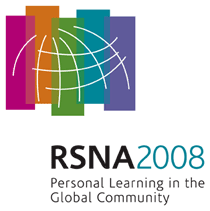
Abstract Archives of the RSNA, 2008
LL-GI4307-R01
Preoperative Liver Volumetry for Partial Liver Resection: Evaluation of Conversion Factors
Scientific Posters
Presented on December 4, 2008
Presented as part of LL-GI-R: Gastrointestinal
Christoph Alexander Karlo MD, Presenter: Nothing to Disclose
Caecilia S Reiner MD, Abstract Co-Author: Nothing to Disclose
Stefan Breitenstein, Abstract Co-Author: Nothing to Disclose
Dominik Weishaupt MD, Abstract Co-Author: Nothing to Disclose
Borut Marincek MD, Abstract Co-Author: Nothing to Disclose
Thomas Frauenfelder MD, Abstract Co-Author: Nothing to Disclose
To compare the intraoperative measured weight and volume of a resected liver specimen with the virtually measured liver volume based on MDCT (multidetector computed tomography) or MRI (magnetic resonance imaging) data sets using different conversion factors taken from the literature.
20 patients underwent partial liver surgery and were examined either by MDCT (n=10) or 1.5T-MRI (n=10) before, and by 1.5T-MRI (n=20) 8 days after surgery.
Based on postoperative images, the resection volume was measured on the preoperative scan by two readers using dedicated software. All volumes were multiplied by different conversion factors taken from the literature. The virtually measured and corrected volumes were compared to the intraoperative measured weight and volume.
Intraoperative mean resection weight and volume were 773 g and 778 mL respectively for the CT-volumetry group, and 619 g and 584 mL respectively for the MR-volumetry group. For CT, the mean estimated volume was 675 mL for reader 1 and 733 mL for reader 2.; for MR the estimated volumes were 694 mL (reader 1) and 679 mL (reader 2).
The relationship showed a strong positive correlation for both readers between the intraoperative measured volumes and the uncorrected volumes of the resected liver for both groups (CT-based: reader 1: r=0.98, p<0.0001; reader 2: r=0.95, p<0.0001; MR-based: reader 1: 0.86, p=0.0013; reader 2: 0.86, p=0.0013). There was no statistical difference between the volumes between all groups for both readers. The Bland Altman plot did not show significant differences other than a slightly better result using a conversion factor of 0.8 for CT-volumetry group resp. 0.75 for the MR-volumetry group.
CT- or MR-based virtual volumetry is highly accurate for determining the liver volume based on conversion factors of 0.8 for CT and 0.75 for MRI.
With new developments in liver surgery preoperative planning has become essential. Knowing the exact volume of the resected specimen before the operation is performed is crucial for the surgeon.
Karlo, C,
Reiner, C,
Breitenstein, S,
Weishaupt, D,
Marincek, B,
Frauenfelder, T,
Preoperative Liver Volumetry for Partial Liver Resection: Evaluation of Conversion Factors. Radiological Society of North America 2008 Scientific Assembly and Annual Meeting, February 18 - February 20, 2008 ,Chicago IL.
http://archive.rsna.org/2008/6006952.html

